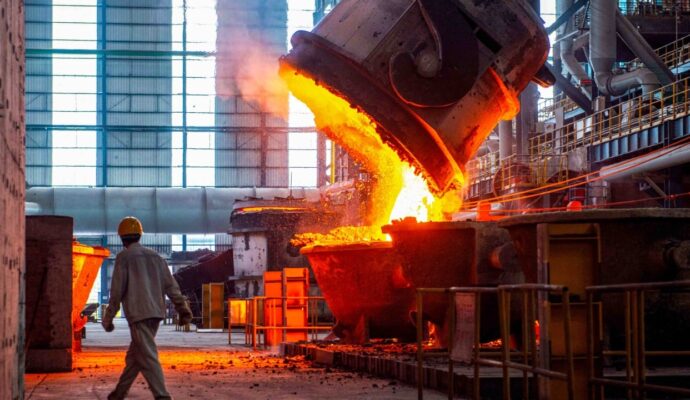No official figures exist demarcating the size of the burden.
A Bank of China report published in 2022 estimated the total at 6.7 trillion yuan (US$918 billion) as of the middle of 2021, equivalent to 5.8 per cent of the country’s gross domestic product that year.
Advertisement
Zhu Baoliang, an adviser with the State Information Centre – a government think tank under the National Development and Reform Commission – told media in August the volume of outstanding corporate receivables in China had increased by more than 10 per cent in the first half of the year.
It’s common for payment to be delayed one or two years
Mainland China’s average payment delay was 83 days last year, shorter than the 86 in 2021 according to global trade credit insurer Coface. Both values, however, are almost twice as long as Japan.
On the ground, local governments and state enterprises are trying their best to maintain normal operations by deferring payments and keeping cash in hand. They are also taking advantage of a broader access to funding channels than private players enjoy.
China’s private firms still face ‘hidden barriers’, state media warns
China’s private firms still face ‘hidden barriers’, state media warns
“The government has long required us to repay debts, but the results have not been significant,” a manager of a state-owned enterprise in southwestern China said, choosing to remain anonymous due to the sensitive nature of the subject.
Advertisement
The manager’s firm, a manufacturer of raw materials for textiles, has been in a state of financial loss since 2020. It has outstanding debts of several billion yuan, and has so far repaid only 30 per cent of arrears owed to transport suppliers since April.
As the primary consideration for corporate repayment is to maintain operations, the manager said, suppliers will be prioritised.
Advertisement
“If our suppliers do not receive payment, they will refuse to provide materials and may even take legal action.”
Advertisement
But the ill effects of the debt load are not necessarily being felt equally, said Jay Feng, a subcontractor for the state-run power grid in southern China, as well as for some property developers in Guangdong province.
“Whether you can get paid depends on how close you can get to the leadership of SOEs,” he said. “If the relationship is good, you are paid faster, but not in full.”
In central Henan province alone, 9.56 billion yuan (US$1.31 billion) in overdue payments to small and medium-sized private firms were tallied up by local governments and SOEs last year, according to an annual government audit.
Advertisement
Continued delays are understandably vexing for those directly affected. Feng expressed outright distrust in state entities, saying: “It’s common for payment to be delayed one or two years with the excuse of red tape or audit issues.”
China’s ticking debt dilemma: the longer they wait, the bigger the cost
China’s ticking debt dilemma: the longer they wait, the bigger the cost
The potential consequences of inaction have not gone unnoticed. Beijing sounded the alarm over the growing number of companies owing each other as well as their banks when assessing the country’s first-quarter economic performance at a Politburo meeting in April.
Wang Dongjing, former vice-president of the Central Party School, said earlier this year local authorities should repay private companies first, and then state firms and banks.
“When private businesses have enough funds and are profitable, they’ll be able to repay bank loans,” he explained.
For the time being, the triangular debt issue has not proved to be a catalyst for a profound crisis, but the economy remains laggard. Official data showed combined profits by private industrial enterprises with annual operating revenues of 20 million yuan or above fell by 10.7 per cent year on year to 1.02 trillion yuan in the January-July period.
Private investment also dropped, down 0.7 per cent from the year prior in the first eight months of 2023.
Advertisement



